To put us all in space and time, we are presently on November 3rd., waking up at 2:30 in the AM, to take a taxi from our Hostal Providencia to the airport for a flight into the Atacama desert in northeast Chile, about 1,000 miles to our north.
So what’s with the Atamacama and who the hell want’s to venture there? The Atacama is 41,000 square miles of the second driest non-polar desert in the world landing within two rain shadows. It’s been the site of numerous Mars testing sites, and the largest array of radio-telescopes in the World (Alma with 66 dishes). Beyond that however is the town of San Pedro de Atacama, a dry (you would have guessed that), rather ramshackle yet quaint town east of Calama, favored with underground waters from two rivers flowing down from the Andes. It is a virtual vortex for the young outdoor adventure crowd including mountain climbers, trekkers, long-distance bicyclists, mountain bikers, star gazers, and others who don’t fit the mold (like ourselves-never did find anyone near my age), but who thrive on the unexpected/ other worldly landscapes.
Surrounding San Pedro are some of the most fascinating geologic wonders of the world including the Valley of Moon (Valle de Luna) with towering sand dunes and fantastically eroded basaltic rock formations; the high altitude Salt Flats (4800m/15,748 ft. above sea level) with the unreal looking Laguna Baltinache (seven turquoise lagoons imbedded in salt); the magnificent volcanic and perfect cone volcano Licancabur, and the creme de la creme, El Tatio Geysers, the third largest geothermal field and highest geysers in the world at a staggering 14,170 ft. While visiting the geysers we also had the privilege of takin in the Atacama Salt Deposits, at a slightly lower elevation with their lagoons sporting three types of Flamingoes (yes, a very surreal sight to see in such an utterly strange and unlikely environment).
Why do three species of Flamingoes come to this micro-environment in high-altitude Chile)?
We took in all these wonders via four small group tours (denomades.com) using Mercedes Sprinter class buses. Impressive vehicles to say the least!. I can fully appreciate why Americans have been flocking to these vehicles for their private Class B RVs. We accommodated ourselves at a small B&B called Incahuasi in San Pedro run by our magnificent and knowledgeable host Sandra Fuentes (info@incahuasi.cl). Being in the shoulder season, we had the B&B all to ourselves, literally, since Sandra had business in Calama and left us for a day by ourselves at her B&B which has five rooms some of which accommodate up to 8 people. San Pedro is a dry, dusty, sometimes quaint, relic of a town that caters to tourists of all stripes and incomes (though predominantly penny pinching youngsters with backpacks who stay in the various hostels of which there are over 50).
After a breathtaking and lung-stressing four days, we took our return flight to Santiago, taking us on a jaw dropping route over the mesmerizing, oft snow-clad Andes interlaced with frequent frozen Andean lakes. This route proceeds south for the entire thousand mile journey. Returning to our quirky Hostal Providencia (about $35.00/night - hostalprovidencia.com), we were warmly welcomed back and asked to join in a party with the staff featuring a beer and “Completa” hotdog which gets smothered in cheese, tomatoes, avocado and mayonnaise for 350 Chilean Pesos, about $0.35!
Spending the next few days in Santiago, Andrea maxed our walking routines round Santiago town including another hike up to San Cristobal; the old fort Hidalgo atop Santa Lucia hill in the middle of the city; the Presidential Palace with an elegant and surprisingly musical changing of the guard; the underground/modern museum of culture and to multiple small vendors dotted around the downtown, selling everything from indigenous lapis lazuli to colorful leather goods and Alpaca woven textiles. We averaged 10-12 miles walking per day, making for early bedtimes, frequently post indulging in Santiago’s famous Pisco Sours (a unique brandy sour of distinction made with lime juice, sugar syrup and ice).
Answer: While dwindling in numbers, three species of flamingoes have been coming to the lagoons in the Atacama salt flats for at least 11,000 years. They come for the brine shrimp which thrive in the lagoons that are fed from fresh-water snowmelt, mixed with the indigenous salt (Halite- mineral form of salt). It is from the brine shrimp that the birds secure their curious pink color.
Next up - Over the Andes by bus to Mendoza, Argentina - home of Malbec Wines


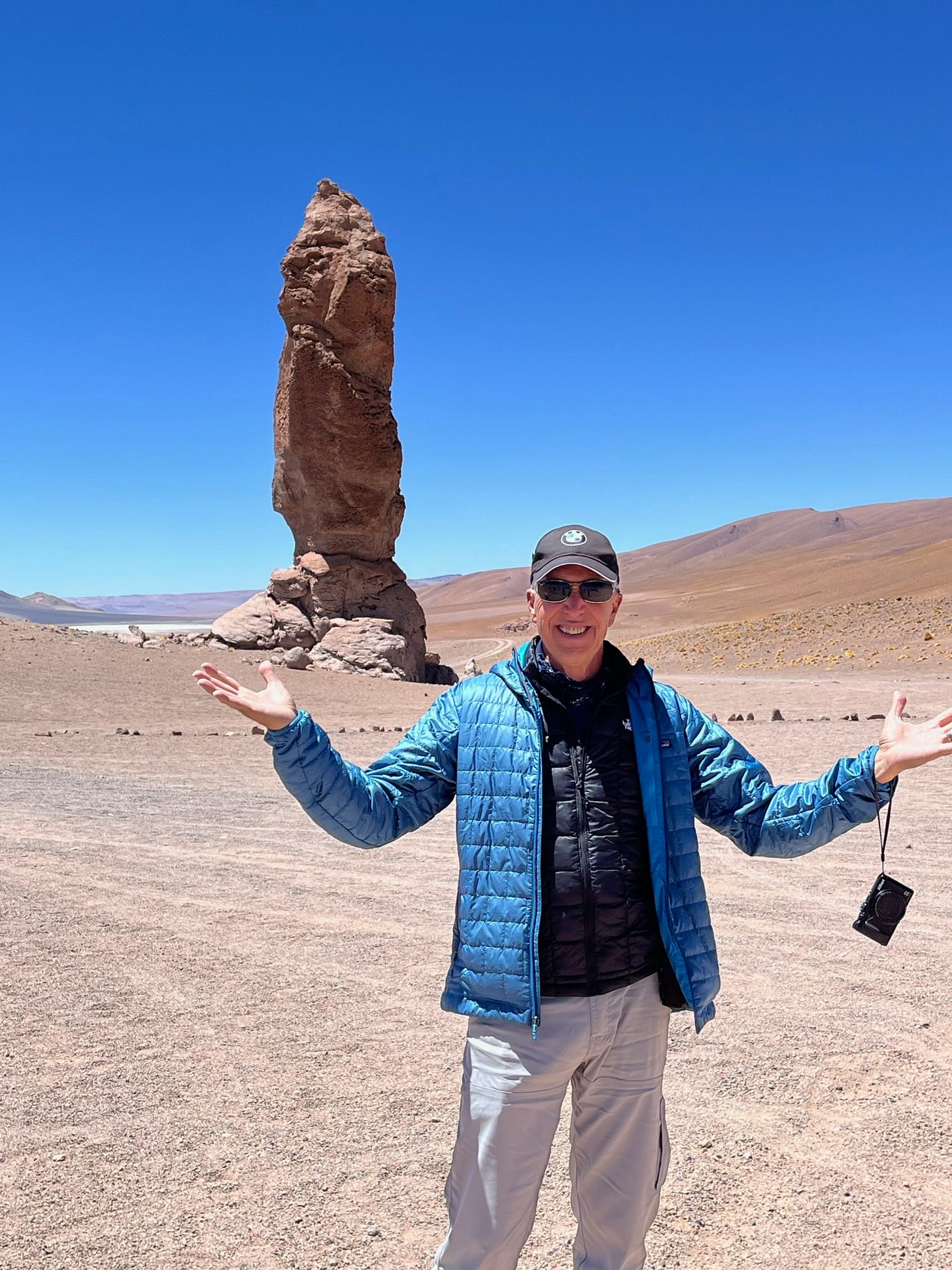
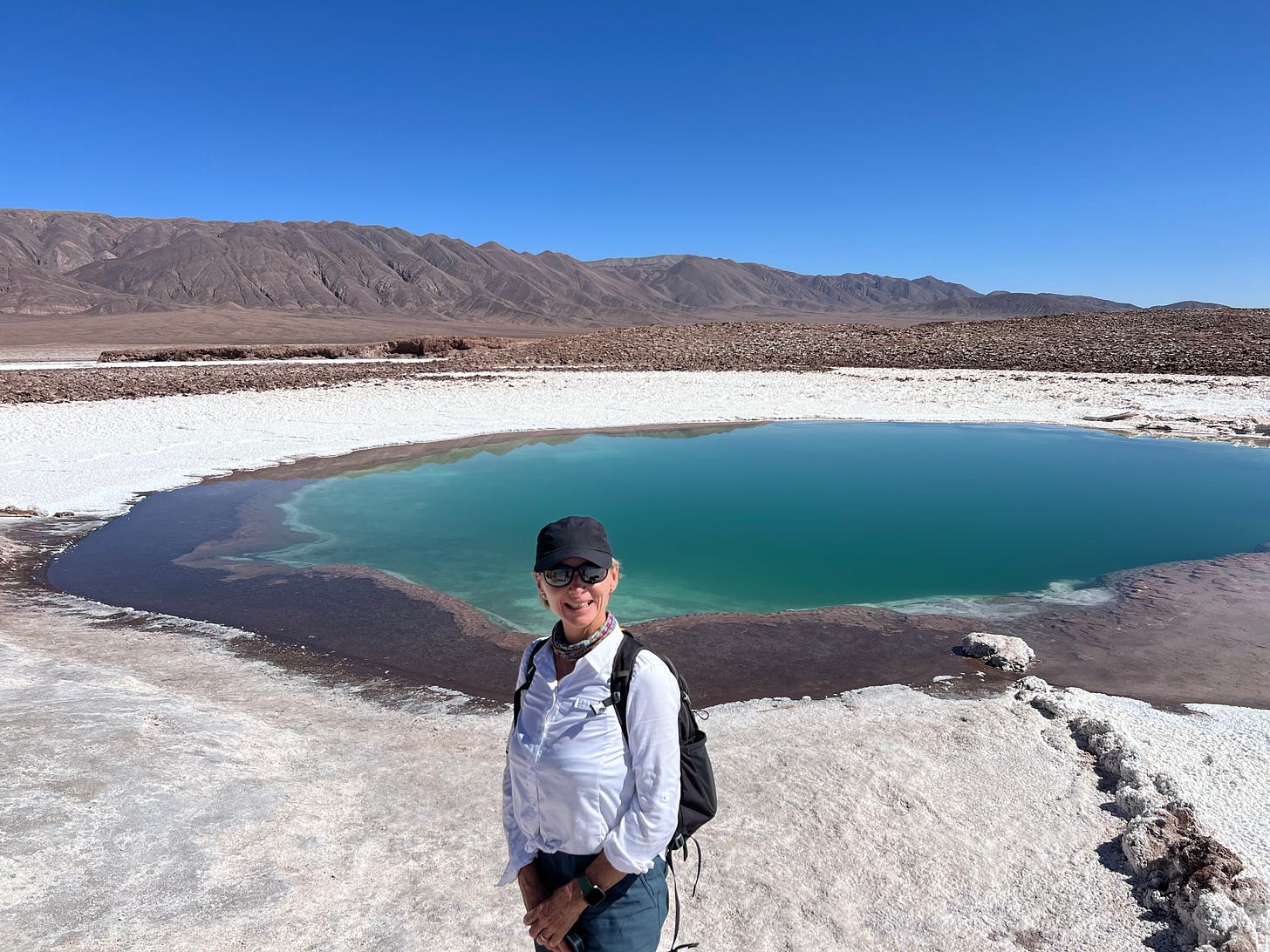

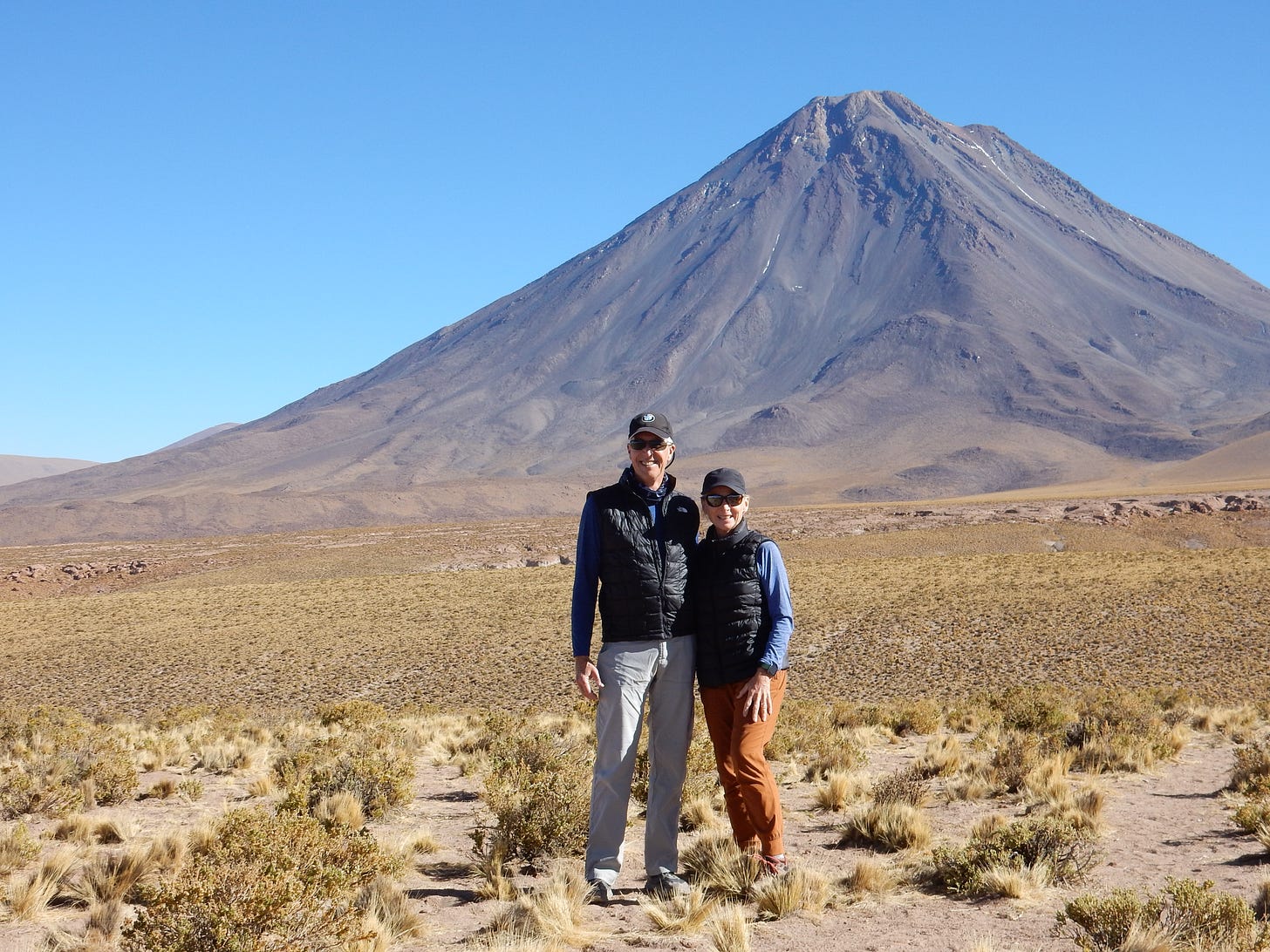
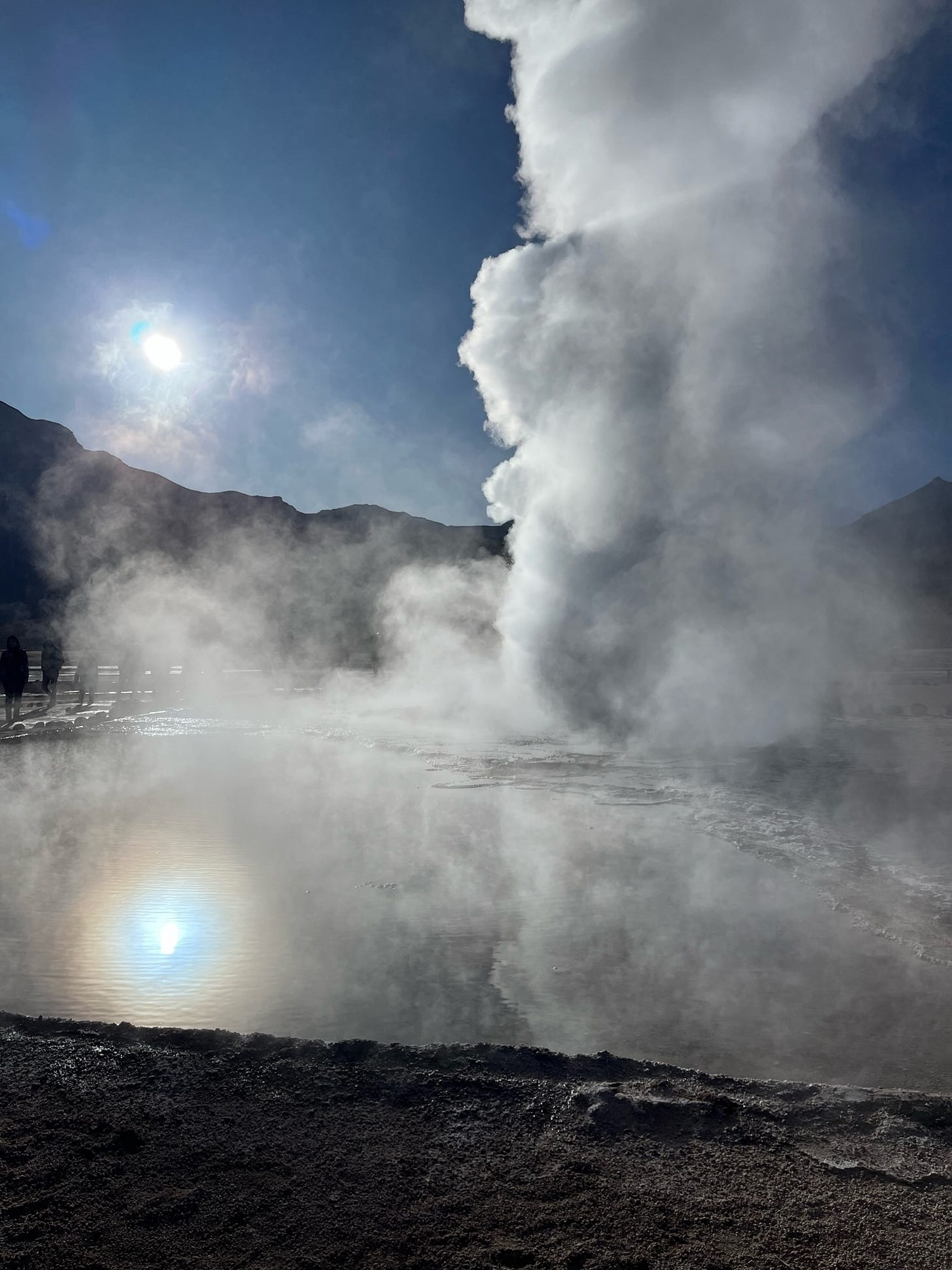
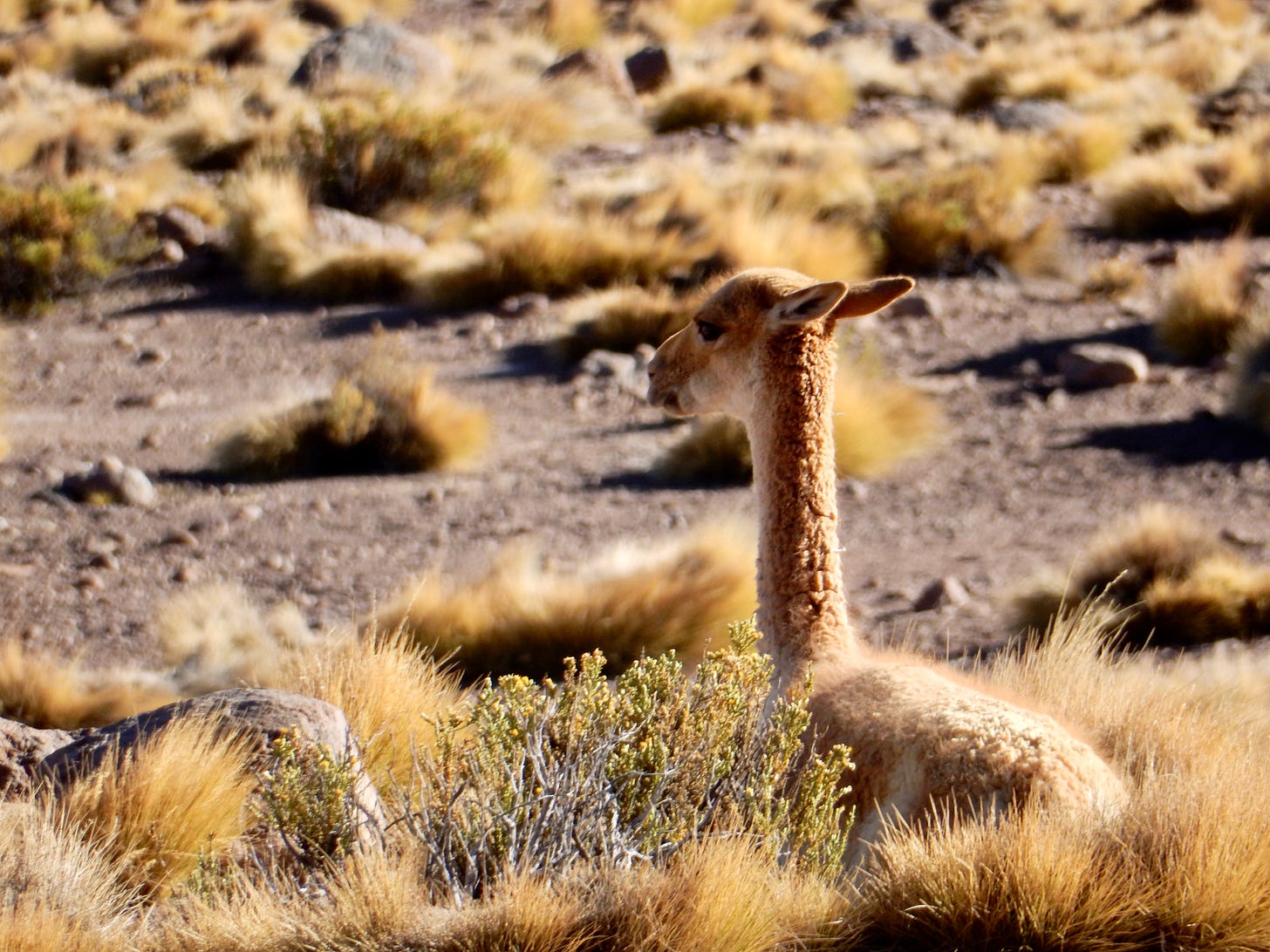

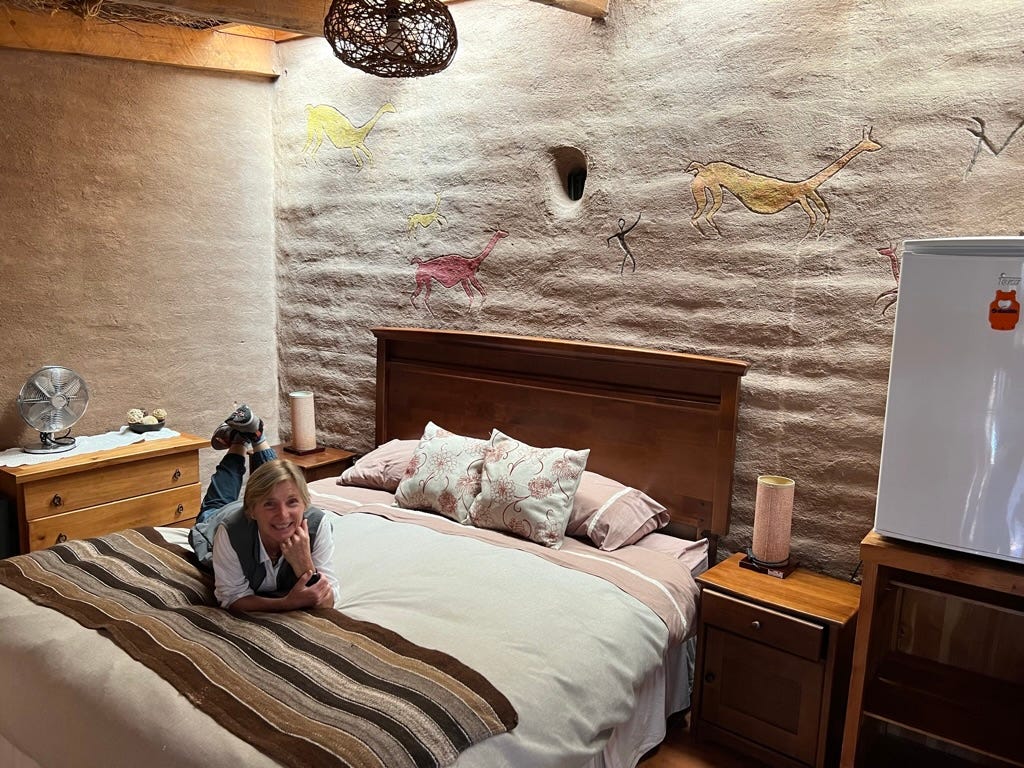
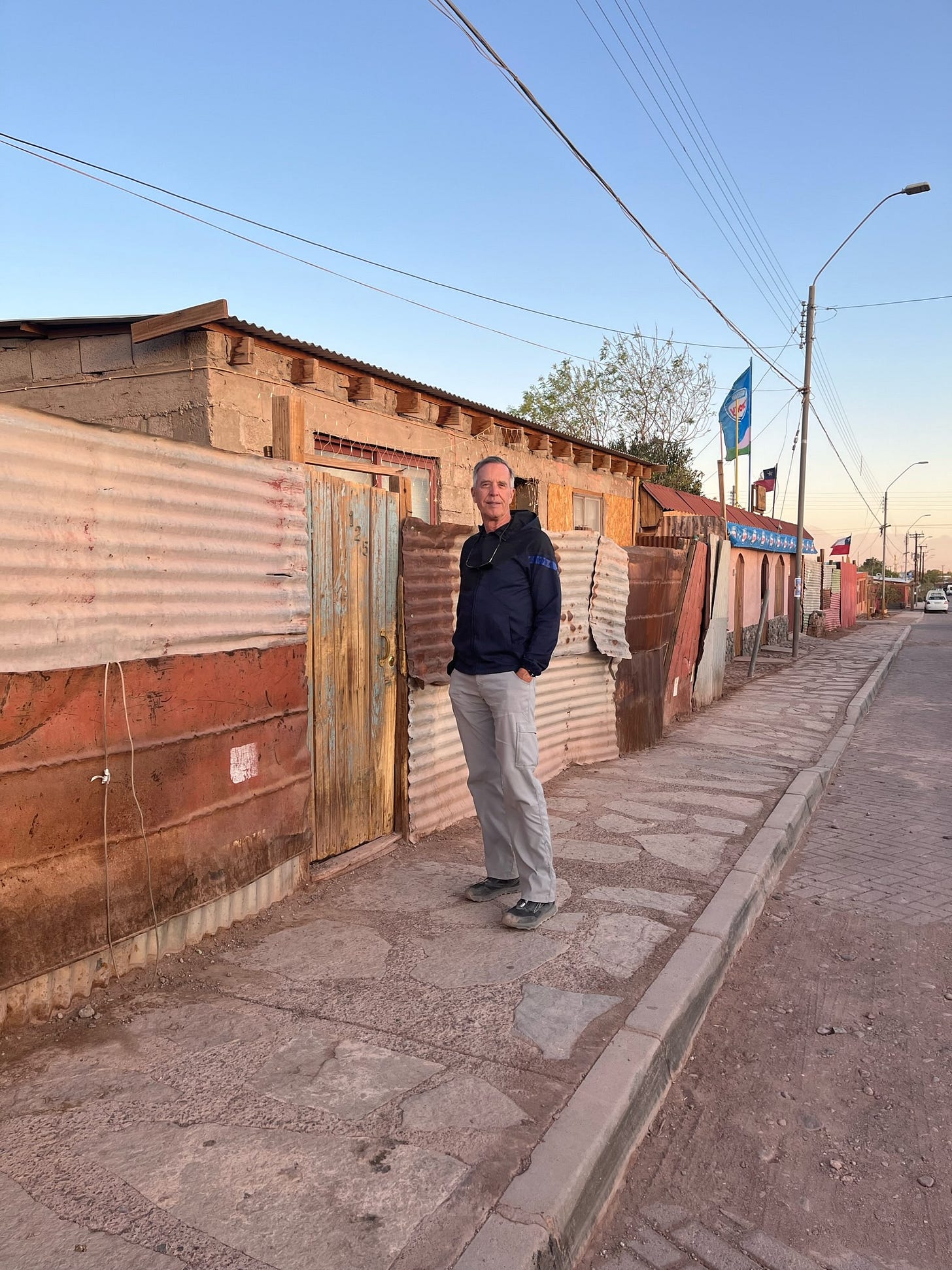
Amazing travels. Glad you are enjoying yourselves.
Great story and pictures!